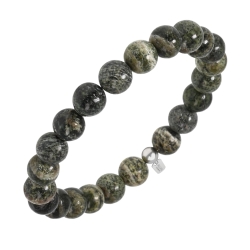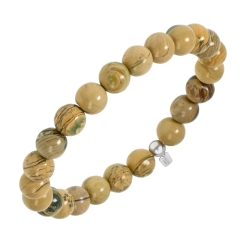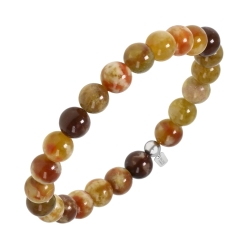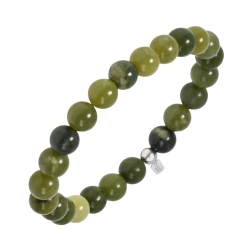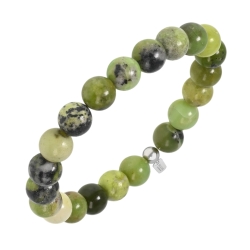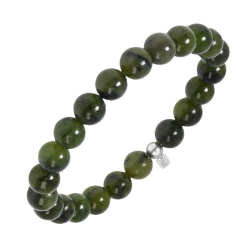Serpentine - knowledge base, jewelry
Properties of serpentine, physiological effects, zodiac signs and serpentine jewelry.







Serpentine is not an unique mineral, but rather the collective name for minerals of similar chemical composition based on the formula (X)2-3(Y)2O5(OH)4, where “X” can be replaced by several minerals such as: magnesium, aluminum, nickel, iron, zinc, manganese; and "Y" may be iron, aluminum or silicon. The most important serpentine minerals are chrysotile, lizard and antigorite. It is mostly greenish in appearance and has a surface similar to snake skin. That's where it got its name, „serpentine” = snake.
Chemical and physical properties of serpentine:
Formula:
(Mg,Fe,Ni, Mn,Zn)2-3(Si,Al,Fe)2O5(OH)4
Crystal system:
cubic
Category:
silicate
Color:
mostly different shades of green, but also yellow, black, white, etc.
Streak:
white
Transparency:
translucent - opaque
Cleavage:
poor - perfect
Fracture:
uneven
Mohs scale hardeness:
3,0 – 6,0
Specific gravity:
2,5 – 2,6 g/cm³
Major metaphysical healing properties attributed to serpentine:
For magnesium deficiency, antispasmodic, migraine, menstrual cramps, kidney disease, arrhythmias, promotes digestion, stimulates metabolism, inhibits mood swings, soothes, relieves stress, creates inner peace.
Zodiacs associated with serpentine gemstones:
Serpentine is the gemstone of the zodiac sign of Gemini.
Click here to read about the general characteristics of horoscopes!
A part of our serpentine jewelry offer. Click on the images for more details!
For more jewelry please click here!
Formation of serpentine
Serpentine minerals are usually formed where other ultramaphic rocks, such as dunite or peridot, undergo hydrothermal metamorphism.
Use of serpentine
Serpentine has been used as a decorative element in construction for thousands of years, because of it’s beautiful green and shiny surface. It is softer than granite but harder than marble. Due to it’s weaker abrasion resistance, they prefer to decorate walls with it. Figurines and ornaments are made from it and polished as precious stones, mostly in the shape of a cabochon, or beads are made from them. Usually green, yellow or black in color, often conatins chromit, magnetit or another minerals.
Occurrence of serpentine
They are found in larger quantities at the boundary between the base of the oceanic crust and the upper mantle.






